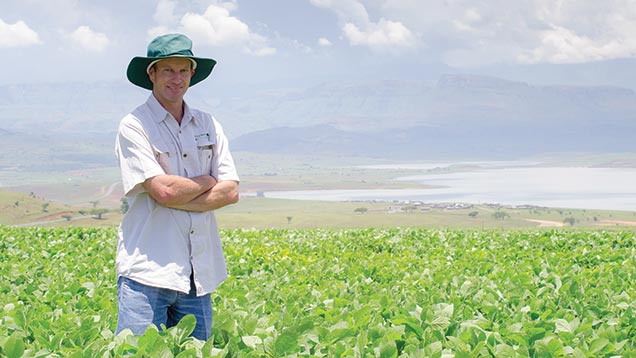Farmer Focus: Ladybirds take care of aphid problem in maize
 © Karen Edwards
© Karen Edwards While our summer season started off well, January and February were very dry. Not only was it dry, but it was also incredibly hot, with each day feeling hotter and drier than the previous one. This was all taking place during the critical grain-fill period of our summer crops.
See also: Read more from our arable Farmer Focus writers
During a normal season, one relishes the walk through your crops. While scouting you are actually admiring your crop. This season, however, it was more a case of having to drag yourself to the fields, preferably early in the morning before the day’s wilt had intensified.
On one such morning I was very concerned with the number of aphids that had decided to call my maize home. Normally I would have simply added the aphicide to the upcoming fungicide spray. With it being so dry, fungal diseases seemed to be at bay and there was no planned pass in the foreseeable future. I then noticed that many ladybirds and their larvae had also decided to call my maize home, or more like an all-you-can-eat buffet.
In deciding on what to do, I drew on my experience with cattle. Flies are a huge problem in summer, both as irritants and carriers of disease. Part of our fly control programme is a little wasp, Muscidiferax raptor, which parasitises the fly pupae, killing it.
So I decided to do nothing and wait a week. The following week, the aphid population was significantly reduced. It hadn’t cost me a cent and I hadn’t obliterated the entire insect population in that field.
Please note that I am not advocating that you must stop spraying for aphids if their population is at an economic threshold. What I am saying is you should assess this economic threshold in context of potential predators that may be present.
Willy-nilly use of pyrethroids and other insecticides earlier in the season may suppress these beneficial predator species, which may necessitate the use of harsher chemicals later.
Bruce Shepherd
Bruce Shepherd farms in Kwa-Zulu Natal, South Africa. He plants 320ha rain-fed summer crops. He also runs 2,200 weaner oxen on pastures, finishing them in a feedlot with maize grown on the farm.

